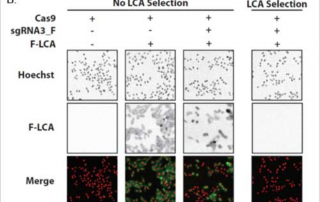Celigo Helping Move Research Forward to Find a Cure for Alzheimer’s
November is National Alzheimer's Disease Awareness Month and research into a cure for the disease is vigorous. In a recently published paper "CRISPR/Cas9-Correctable mutation-related molecular andphysiological phenotypes in iPSC-derived Alzheimer’s PSEN2N141I neurons" researchers used the Celigo image cytometer upstream of CRISPR/Cas9 to visualize and asses cell death related to the sensitivity of iPSC-derived PSEN2N1411 neurons in the presence of Aβ42 oligomer toxicity.

